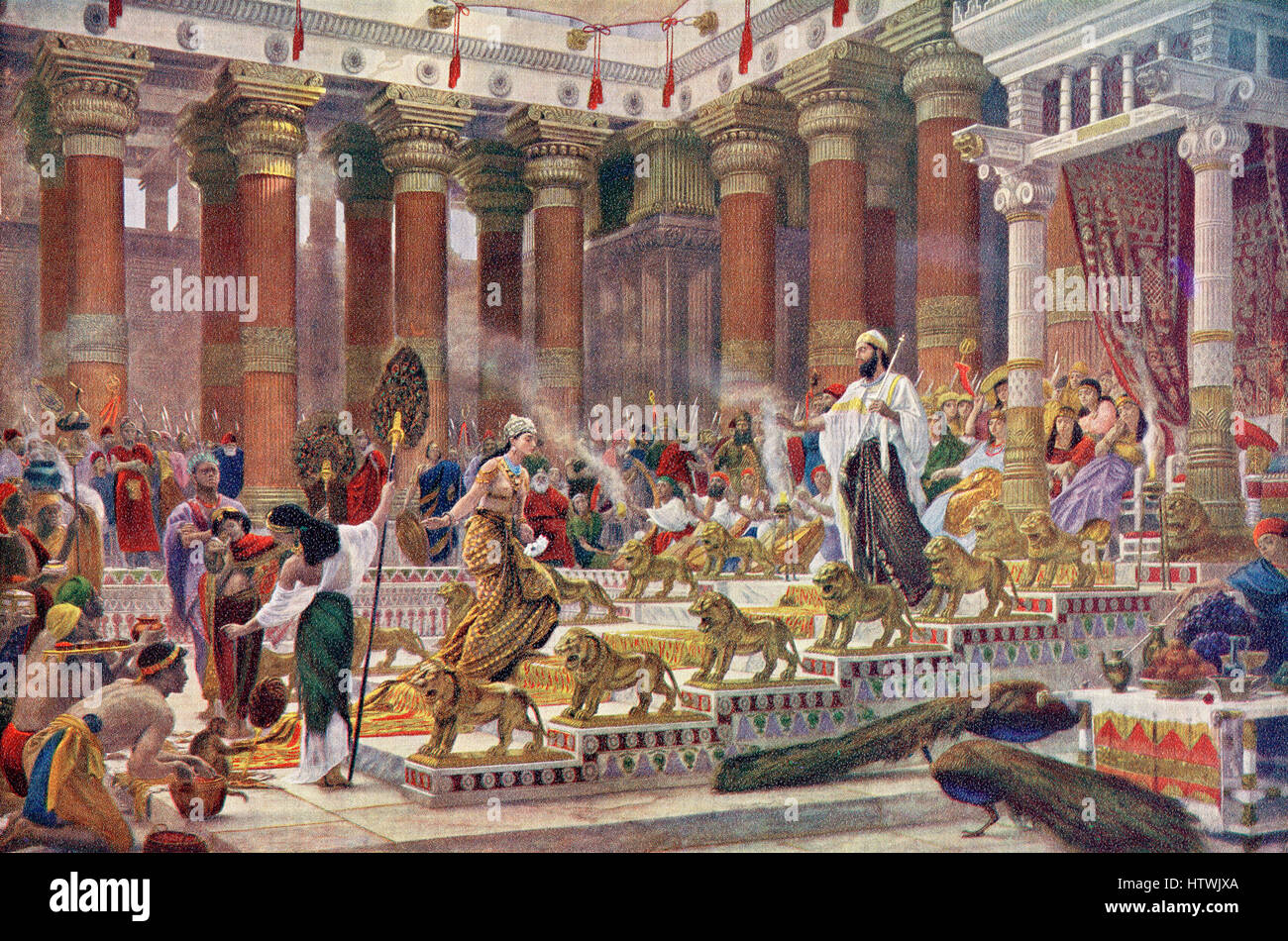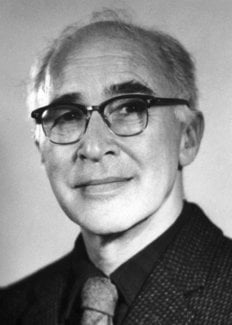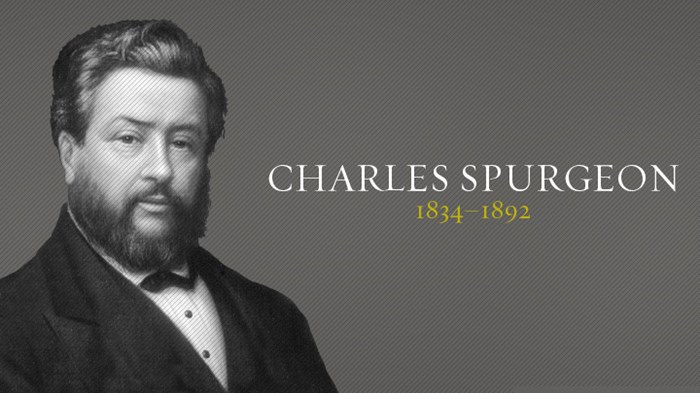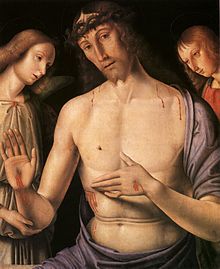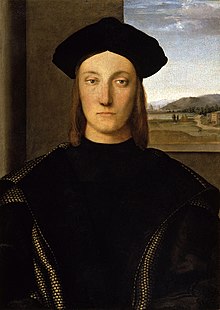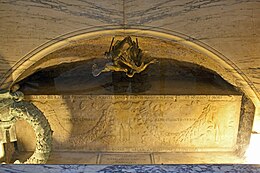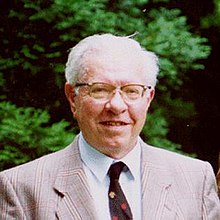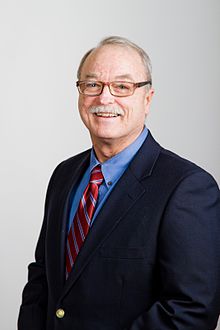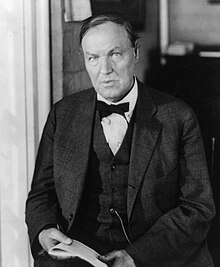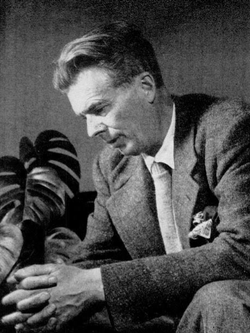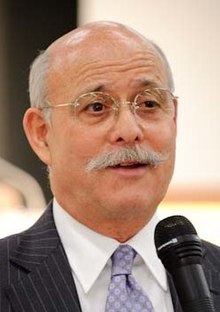_

_
XXXX
November 1, 2019
Richard Dawkins c/o Richard Dawkins Foundation,
Washington, DC 20005
Dear Mr. Dawkins,
i have enjoyed reading about a dozen of your books and some of the most intriguing were The God Delusion, An Appetite for Wonder: The Making of a Scientist, and Brief Candle in the Dark: My Life in Science.
I enjoyed reading Outgrowing God which is your latest book, and I wanted to respond to something you said on page 36. You quote the gospel of Thomas where it says that Jesus made 12 sparrows from clay. Then you note: “A sparrow is made of more than 100 billion cells…Nobody knew those details in Jesus’s time.”
My first response is the Gospel of Thomas is not part of the Bible. Secondly, the Bible does have some amazing scientific and medical information in it that you need to check out!!!
Scientific Foreknowledge and Medical Acumen of the Bible
While it is the case that the Bible does not present itself as a scientific or medical textbook, it is only reasonable that if God truly did inspire the books that compose the Bible, they would be completely accurate in every scientific or medical detail found among their pages. Furthermore, if the omniscient Ruler of the Universe actually did inspire these books, scientific and medical errors that fill the pages of other ancient, non-inspired texts should be entirely absent from the biblical record. Is the Bible infallible when it speaks about scientific fields of discipline, or does it contain the errors that one would expect to find in the writings of fallible men in ancient times?
That the first five books of the Old Testament are a product of Moses is a matter of historical record (Lyons and Staff, 2003). Furthermore, the story of Moses’ education among the Egyptian culture was well understood. In fact, even those Jews who did not convert to Christianity were so familiar with the historic fact that Moses was educated in “all the wisdom of the Egyptians” (Acts 7:22), that Stephen’s statement to that effect went completely undisputed. Moses had been trained under the most advanced Egyptian educational system of his day. With such training, it would have been only natural for Moses to include some of the Egyptian “wisdom” in his writings if he were composing the Pentateuch by using his own prowess and mental faculties.
A look into the medical practices from ancient Egypt and those found in the Pentateuch, however, reveals that Moses did not necessarily rely on “wisdom” of the Egyptians (which, in many cases, consisted of life-threatening malpractice). While some medical practices in the Pentateuch are similar to those found in ancient Egyptian documents, the Pentateuch exhibits a conspicuous absence of those harmful malpractices that plague the writings of the Egyptians. Moses penned the most advanced, flawless medical prescriptions that had ever been recorded. Furthermore, every statement that pertained to the health and medical well-being of the Israelite nation recorded by Moses could theoretically still be implemented and be completely in accord with every fact modern medicine has learned in regard to germ spreading, epidemic disease control, communal sanitation, and a host of other medical and scientific discoveries.
It is the case that the ancient Egyptians were renowned in the ancient world for their progress in the field of medicine. Dr. Massengill noted that “Egypt was the medical center of the ancient world” (1943, p. 13). During the days of in the Medo-Persian Empire, the ancient historian Herodotus recorded that it was king Darius’ practice “to keep in attendance certain Egyptian doctors, who had a reputation for the highest eminence in their profession” (3.129). Thus, while the medical practices of the Bible could be equally compared to those of other ancient cultures and found to be flawlessly superior, comparing them to that of the eminent Egyptian culture should suffice to manifest the Bible’s supernatural superiority in the field.
It Will Cure You—If It Doesn’t Kill You First
Among the ancient documents that detail much of the Egyptian medicinal knowledge, the Ebers Papyrus ranks as one of the foremost sources. This papyrus was discovered in 1872 by a German Egyptologist named Georg Ebers (the name from which the papyrus acquired its moniker) (Ancient Egyptian…, 1930, p. 1). It consists of a host of medical remedies purported to heal, enhance, and prevent. “Altogether 811 prescriptions are set forth in the Papyrus, and they take the form of salves, plasters, and poultices; snuffs, inhalations, and gargles; draughts, confections, and pills; fumigations, suppositories, and enemata” (p. 15). Among the hundreds of prescriptions, disgusting treatments that caused much more harm than good can be found. For instance, under a section titled “What to do to draw out splinters in the flesh,” a remedy is prescribed consisting of worm blood, mole, and donkey dung” (p. 73). [Doctors S.I. McMillen and David Stern note that dung “is loaded with tetanus spores” and “a simple splinter often resulted in a gruesome death from lockjaw (2000, p. 10).] Remedies to help heal skin diseases included such prescriptions as: “A hog’s tooth, cat’s dung, dog’s dung, aau-of-samu-oil, berries-of-the-xet-plant, pound and apply as poultice” (Ancient Egyptian…, 1930, p. 92). Various other ingredients for the plethora of remedies concocted included “dried excrement of a child” (p. 98), “hog dung” (p. 115), and “a farmer’s urine” (p. 131). One recipe to prevent hair growth included lizard dung and the blood from a cow, donkey, pig, dog, and stag (p. 102). While it must be noted that some of the Egyptian medicine actually did include prescriptions and remedies that could be helpful, the harmful remedies and ingredients cast a sickening shadow of untrustworthiness over the entire Egyptian endeavor as viewed by the modern reader.
As medical doctor S.E. Massengill stated:
The early Egyptian physicians made considerable use of drugs. Their drugs were of the kind usually found in early civilizations; a few effective remedies lost in a mass of substances of purely superstitious origin. They used opium, squill, and other vegetable substances, but also excrement and urine. It is said that the urine of a faithful wife was with them effective in the treatment of sore eyes (1943, p. 15).
In addition, it seems that the Egyptians were among the first to present the idea of “good and laudable pus” (McMillen and Stern, 2000, p. 10). Due to the idea that infection was good and the pus that resulted from it was a welcomed effect, “well-meaning doctors killed millions by deliberately infecting their wounds” (p. 10). Needless to say, the modern-day reader would not want to be a patient in an ancient Egyptian clinic!
PRESCRIPTIONS IN THE PENTATEUCH
The first five books of the Old Testament, admittedly, are not devoted entirely to the enumeration of medical prescriptions. They are not ancient medical textbooks. These books do, however, contain numerous regulations for sanitation, quarantine, and other medical procedures that were to govern the daily lives of the Israelite nation. Missing entirely from the pages of these writings are the harmful remedies and ingredients prescribed by other ancient civilizations. In fact, the Pentateuch exhibits an understanding of germs and disease that much “modern” medicine did not grasp for 3,500 years after the books were written.
Blood: The Liquid of Life
Blood always has been a curious substance whose vast mysteries and capabilities have yet to be fully explored. Doctors in the twenty-first century transfuse it, draw it, separate it, package it, store it, ship it, and sell it. And, although modern-day scientists have not uncovered completely all of the wonders of blood, they have discovered that it is the key to life. Without this “liquid of life,” humans and animals would have no way to circulate the necessary oxygen and proteins that their bodies need in order to survive and reproduce. Hemoglobin found in the red blood cells carries oxygen to the brain, which in turn uses that oxygen to control the entire body. A brain without oxygen is like a car without gas or a computer without electricity. Blood makes all of the functions in the body possible.
In the past, ignorance of blood’s value caused some “learned” men to do tragic things. For instance, during the middle ages, and even until the nineteenth century, doctors believed that harmful “vapors” entered the blood and caused sickness. For this reason, leeches were applied to victims of fever and other illnesses in an attempt to draw out blood containing these vapors. Also, the veins and arteries located just above the elbow were opened, and the patient’s arms were bled to expunge the contaminated blood. George Washington, the first President of the United States, died because of such misplaced medical zeal. An eyewitness account of Washington’s death relates that he came down with a chill, and in an effort to cure him, those who attended him resorted to bleeding; “a vein was opened, but no relief afforded” (“The Death of George Washington,” 2001).
Thousands of years before the lethal practice of bloodletting was conceived, mankind had been informed by God that blood was indeed the key to life. In Leviticus 17:11, Moses wrote: “For the life of the flesh is in the blood.”
Today, we understand completely the truthfulness of Moses’ statement that “the life of the flesh is in the blood.” But how did an ancient shepherd like Moses come to know such information? Just a lucky guess? How could Moses have known almost 3,500 years ago that life was in the blood, while it took the rest of the scientific and medical community thousands of years (and thousands of lives!) to grasp this truth? The Old Testament’s conspicuous failure to institute improper medical procedures as they related to blood speaks loudly of its medical accuracy.
Germs, Labor Fever, and Biblical Sanitation
In their book, None of These Diseases, physicians S.I. McMillen and David Stern discussed how many of the hygienic rules established by God for the children of Israel still are applicable today. To illustrate their point, they recounted the story of Ignaz Semmelweis.
In 1847, an obstetrician named Ignaz Semmelweis was the director of a hospital ward in Vienna, Austria. Many pregnant women checked into his ward, but 18% of them never checked out. One out of every six that received treatment in Semmelweis’ ward died of labor fever (Nuland, 2003, p. 31). Autopsies revealed pus under their skin, in their chest cavities, in their eye sockets, etc. Semmelweis was distraught over the mortality rate in his ward, and other hospital wards like it all over Europe. Nuland noted that Australia, the Americas, Britain, Ireland, and practically every other nation that had established a hospital suffered a similar mortality rate (2003, pp. 41-43). If a woman delivered a baby using a midwife, then the death fell to only about 3%. Yet if she chose to use the most advanced medical knowledge and facilities of the day, her chance of dying skyrocketed immensely!
Semmelweis tried everything to curb the carnage. He turned all the women on their sides in hopes that the death rate would drop, but with no results. He thought maybe the bell that the priest rang late in the evenings scared the women, so he made the priest enter silently, yet without any drop in death rates.
As he contemplated his dilemma, he watched young medical students perform their routine tasks. Each day the students would perform autopsies on the dead mothers. Then they would rinse their hands in a bowl of bloody water, wipe them off on a common, shared towel, and immediately begin internal examinations of the still-living women. Nuland commented concerning the practice: “Because there seemed no reason for them to wash their hands, except superficially, or change their clothing before coming to the First Division, they did neither” (2003, p. 100). As a twenty-first-century observer, one is appalled to think that such practices actually took place in institutes of what was at the time “modern technology.” What doctor in his right mind would touch a dead person and then perform examinations on living patients—without first employing some sort of minimal hygienic practices intended to kill germs? But to Europeans in the middle-nineteenth-century, germs were virtually a foreign concept. They never had seen a germ, much less been able to predict its destructive potential. According to many of their most prevalent theories, disease was caused by “atmospheric conditions” or “cosmic telluric influences.”
Semmelweis ordered everyone in his ward to wash his or her hands thoroughly in a chlorine solution after every examination. In three months, the death rate fell from 18% to 1%. Semmelweis had made an amazing discovery. On the inside cover-flap of the book about Semmelweis, written by medical doctor and historian Sherwin Nuland, the text reads:
Ignác Semmelweis is remembered for the now-commonplace notion that doctors must wash their hands before examining patients. In mid-nineteenth-century Vienna, this was a subversive idea. With deaths from childbed fever exploding, Semmelweis discovered that doctors themselves were spreading the disease (2003, inside cover flap).
Had Semmeliweis made a groundbreaking discovery, or is it possible that he simply “rediscovered” what had been known in some circles for many years? Almost 3,300 years before Semmelweis lived, Moses had written: “He who touches the dead body of anyone shall be unclean seven days. He shall purify himself with the water on the third day and on the seventh day; then he will be clean. But if he does not purify himself on the third day and on the seventh day, he will not be clean.” Germs were no new discovery in 1847; the biblical text recorded measures to check their spread as far back as approximately 1500 B.C.
The Water of Purification
Also germane to this discussion is the composition of the “water of purification” listed in Numbers 19. When Old Testament instructions are compared to the New Testament explanations for those actions, it becomes clear that some of the ancient injunctions were primarily symbolic in nature. For instance, when the Passover Lamb was eaten, none of its bones was to be broken. This symbolized the sacrifice of Christ, Whose side was pierced, yet even in death escaped the usual practice of having His legs broken (John 19:31-37).
With the presence of such symbolism in the Old Testament, it is important that we do not overlook the Old Testament instructions that were pragmatic in value and that testify to a Master Mind behind the writing of the Law. One such directive is found in Numbers 19, where the Israelites were instructed to prepare the “water of purification” that was to be used to wash any person who had touched a dead body.
At first glance, the water of purification sounds like a hodge-podge of superstitious potion-making that included the ashes of a red heifer, hyssop, cedar wood, and scarlet. But this formula was the farthest thing from a symbolic potion intended to “ward off evil spirits.” On the contrary, the recipe for the water of purification stands today as a wonderful example of the Bible’s brilliance, since the recipe is nothing less than a procedure to produce an antibacterial soap.
When we look at the ingredients individually, we begin to see the value of each. First, consider the ashes of a red heifer and cedar. As most school children know, the pioneers in this country could not go to the nearest supermarket and buy their favorite personal hygiene products. If they needed soap or shampoo, they made it themselves. Under such situations, they concocted various recipes for soap. One of the most oft’-produced types of soap was lye soap. Practically anyone today can easily obtain a recipe for lye soap via a quick search of the Internet (see “Soapmaking,” n.d.). The various lye-soap recipes reveal that, to obtain lye, water often is poured through ashes. The water retrieved from pouring it through the ashes contains a concentration of lye. Lye, in high concentrations, is very caustic and irritating to the skin. It is, in fact, one of the main ingredients in many modern chemical mixtures used to unclog drains. In more diluted concentrations, it can be used as an excellent exfoliant and cleansing agent. Many companies today still produce lye soaps. Amazingly, Moses instructed the Israelites to prepare a mixture that would have included lye mixed in a diluted solution.
Furthermore, consider that hyssop was also added to the “water of purification.” Hyssop contains the antiseptic thymol, the same ingredient that we find today in some brands of mouthwash (McMillen and Stern, 2000, p. 24). Hyssop oil continues to be a popular “healing oil,” and actually is quite expensive. In listing the benefits of hyssop, one Web site noted: “Once used for purifying temples and cleansing lepers, the leaves contain an antiseptic, antiviral oil. A mold that produces penicillin grows on the leaves. An infusion is taken as a sedative expectorant for flue, bronchitis, and phlegm” (see “Hyssop”).
Other ingredients in the “water of purification” also stand out as having beneficial properties. The oil from the cedar wood in the mixture most likely maintained numerous salutary properties. A Web site dealing with various essential oils noted: “Cedar wood has long been used for storage cabinets because of its ability to repel insects and prevent decay. In oil form, applied to humans, it is an antiseptic, astringent, expectorant (removes mucus from respiratory system), anti-fungal, sedative and insecticide” (“Spa Essential Oils,” 2005). Another site, more specifically dealing with the beneficial properties of cedar, explained:
Cedar leaves and twigs are in fact rich in vitamin C, and it was their effectiveness in preventing or treating scurvy that led to the tree’s being called arbor vitae or tree of life. In addition, recent research has shown that extracts prepared from either Thujaoccidentalis or Thuja plicata [types of oriental cedar—KB] do in fact have antiviral, anti-inflammatory, and antibacterial properties. A group of German researchers reported in 2002 that an extract prepared from cedar leaf, alcohol, and water inhibits the reproduction of influenza virus type A, while a team of researchers in Japan found that an extract of Western red cedar was effective in treating eczema (Frey, n.d).
It is interesting to note that this information about the beneficial properties of the ingredients such as cedar, hyssop, and lye in the water of purification is not coming from Bible-based sources. Most of it is simply coming from studies that have been done through cosmetic and therapeutic research.
Finally, the Israelites were instructed to toss into the mix “scarlet,” which most likely was scarlet wool (see Hebrews 9:19). Adding wool fibers to the concoction would have made the mixture the “ancient equivalent of Lava® soap” (McMillen and Stern, 2000, p. 25).
Thousands of years before any formal studies were done to see what type of cleaning methods were the most effective; millennia before American pioneers concocted their lye solutions; and ages before our most advanced medical students knew a thing about germ theory, Moses instructed the Israelites to concoct an amazingly effective recipe for soap, that, if used properly in medical facilities like hospitals in Vienna, would literally have saved thousands of lives.
Quarantine
Moses detailed measures to prevent the spread of germs from dead bodies to living humans long before such was understood and prescribed in modern medicine. But the Old Testament record added another extremely beneficial practice to the field of medicine in its detailed descriptions of maladies for which living individuals should be quarantined. The book of Leviticus lists a plethora of diseases and ways in which an Israelite would come in contact with germs. Those with such diseases as leprosy were instructed to “dwell alone” “outside the camp” (Leviticus 13:46). If and when a diseased individual did get close to those who were not diseased, he was instructed to “cover his mustache, and cry, ‘Unclean! Unclean!” (13:45). It is of interest that the covering of ones mustache would prevent spit and spray from the mouth of the individual to pass freely through the air, much like the covering of one’s mouth during a cough.
Concerning such quarantine practices, S.E. Massengill wrote in his book A Sketch of Medicine and Pharmacy:
In the prevention of disease, however, the ancient Hebrews made real progress. The teachings of Moses, as embodied in the Priestly Code of the Old Testament, contain two clear conceptions of modern sanitation—the importance of cleanliness and the possibility of controlling epidemic disease by isolation and quarantine (1943, p. 252).
In regard to the understanding of contagion implied in the quarantine rules in the Old Testament, McGrew noted in the Encyclopedia of Medical History: “The idea of contagion was foreign to the classic medical tradition and found no place in the voluminous Hippocratic writings. The Old Testament, however, is a rich source for contagionist sentiment, especially in regard to leprosy and venereal disease” (1985, pp.77-78). Here again, the Old Testament exhibits amazingly accurate medical knowledge that surpasses any known human ingenuity available at the time of its writing.
LAWS OF FOOD CONSUMPTION
Food regulations enumerated in the first five books of the Old Testament have been scrutinized by credentialed professionals in the fields of dietary and pathological research. The regulations have proven to coincide with modern science’s understanding of various aspects of health and disease prevention.
In 1953, an extensive study, performed by David I. Macht and published in the Bulletin of the History of Medicine (a publication of the American Association of the History of Medicine and of The Johns Hopkins Institute of the History of Medicine), tested the toxicity of the meat of animals listed in Leviticus 11 and Deuteronomy 14. Macht’s technique was to place a certain seedling (Lupinus albus) in fresh muscle juices of the various animals noted as clean and unclean in the biblical text. This method was used at the time to study the blood of normal human patients as compared to the blood of cancerous patients (1953, p. 444). Macht noted that his results revealed “data which are of considerable interest not only to the medical investigator but also to the students of ancient Biblical literature” (p. 445).
Some of his results were indeed of interest. For instance, he would take a control group of seedlings that grew in normal solutions and compare that group to seedlings placed in the various meat juices. He would then record the percent of seeds that grew in the meat juices as compared to those that grew under normal circumstances. For example, when placing the seedlings in meat juices from the Ox, the seeds grew 91% as often as they would if placed in a regular growing solution. Seeds in sheep juices grew 94% as often as those in the control group in regular solution. Seedlings in meat juice from a calf—82%; from a goat—90%; and from a deer 90%. Since these animals chew the cud and have a divided hoof, they were listed as clean in Leviticus 11 and Deuteronomy 14:
Now the Lord spoke to Moses and Aaron, saying to them, “Speak to the children of Israel, saying, ‘These are the animals which you may eat among all the animals that are on the earth: Among the animals, whatever divides the hoof, having cloven hooves and chewing the cud—that you may eat’” (Leviticus 11:1-3).
When several unclean animals were studied, however, they showed significantly higher levels of toxicity and much lower levels of seedling growth. Seedlings in meat juice from pigs grew only 54% as often as the control group under normal growing conditions; rabbit—49%; camel—41%; and horse—39%. These results for larger mammals suggested that the biblical division between clean and unclean could have been related to the toxicity of the juices of such animals.
Macht did similar research on birds, in which he found that extracts from biblical clean birds such as the pigeon and quail grew his seedlings 93% and 89%, while those from unclean birds such as the Red-tail hawk (36%) and owl (62%) were much more toxic. As Moses said: “And these you shall regard as an abomination among the birds; they shall not be eaten, they are an abomination: the eagle, the vulture, the buzzard, the kite, and the falcon after its kind; every raven after its kind, the ostrich, the short-eared owl, the sea gull, and the hawk after its kind” (Leviticus 11:13-19). Other studies included several different kinds of fish. The biblical regulation for eating fish was that the Israelites could eat any fish that had fins and scales (Deuteronomy 14:9). Those water-living creatures that did not possess fins and scales were not to be eaten (14:10). In regard to his study on the toxicity of fish, Macht wrote:
Of special interest were experiments made with muscle juices and also blood solutions obtained from many species of fishes. Fifty-four species of fishes were so far studied in regard to toxicity of meat extracts. It was found that the muscle extracts of those fishes which possess scales and fins were practically non-toxic [Herring—100%; Pike—98%; Shad—100%—KB], while muscle extracts from fishes without scales and fins were highly toxic for the growth of Lupinus albus seedlings (pp. 446-448).
Macht’s study, even after more than five decades, continues to remain of great interest. His rigorous research led him to conclude:
The observations described above corroborate the impression repeatedly made on the author in investigations as a physician (M.D. Johns Hopkins, 1906), as an experimental biologist (Member of Society for Experimental Biology and Medicine), and as Doctor of Hebrew Literature (Yeshiva University, 1928) that all allusions of the Book of Books, to nature, natural phenomena, and natural history, whether in the form of factual statements or in the form of metaphors, similes, parables, allegories, or other tropes are correct either literally or figuratively…. Such being the extraordinary concordance between the data of the Scriptures and many of the modern and even most recent discoveries in both the biological and physico-chemical sciences, every serious student of the Bible will, I believe, endorse the assertion of Sir Isaac Newton, that “The Scriptures of God are the most sublime philosophy. I find more such marks of authenticity in the Bible than in profane history anywhere” (p. 449).
Some, however, have questioned Macht’s results. Prior research done by Macht in 1936 and 1949 produced discordant results from his research in 1953. But there are several compelling reasons for accepting Macht’s 1953 research. First, it could be the case that Macht’s 1953 research simply was more refined and the procedure better understood. As one would expect in the scientific field, research generally tends to improve with time. Second, Macht was a high-profile doctor with copious credentials. His research in 1936 and 1949 had been published and was easily accessible. Yet even though his previous research was available, the Johns Hopkins Institute considered it acceptable to publish his 1953 research, which would suggest that the 1953 research included additional methods and/or information that would override the earlier research. Third, Macht’s procedure as described in the 1953 paper was fairly simple and easily reproducible. But those who question the work have failed to produce experimental data after 1953 that would negate Macht’s study. If his 1953 procedures were fraught with error, a few simple experiments could be done to prove that. No such experimental data refuting Macht has been produced.
For these reasons, the findings of Dr. Macht aid in the defense of the Bible’s inspiration and remarkably accurate medical procedures as far back as the time of Moses. But the validity of Old Testament food consumption laws certainly does not rely solely on Macht’s 1953 research. Additional confirmation of the beneficial, protective nature of Mosaic food consumption laws is readily available.
Fins and Scales
As was previously mentioned, the Mosaic criteria for eating water-living creatures was that the creatures have scales and fins (Leviticus 11:12). This injunction was extremely beneficial, since a multitude of problems surround many sea creatures that do not have scales and fins.
The Blowfish
The blowfish has fins but does not have scales. Thus, it would not have been edible under the Old Testament laws—fortunately for the Israelites. The blowfish can contain toxin in its ovaries, liver, and other organs that is highly potent and deadly. This toxin, called tetrodotoxin, is thought to be “1250 times more deadly than cyanide” and 160,000 times more potent than cocaine. A tiny amount of it can kill 30 grown adults (Dilion, 2005). As odd as it sounds, blowfish is served as a delicacy all over the world, especially in Japan and other far eastern countries. As a delicacy, it is called fugu, and is prepared by certified, licensed chefs. The toxins can be removed successfully, making the food edible, but the procedure often goes awry. Some who have researched fugu say that it is a food connoisseur’s version of Russian roulette. Due to the extreme danger involved in eating fugu, it is illegal to serve it to the Emperor of Japan! The Mosaic instructions concerning edible fish would have helped the Israelites avoid the dangerous blowfish, as well as danger posed by eating other toxic sea creatures such as certain jelly fish, sea anemones, and octopi.
Shellfish
Although shellfish are edible today, there are inherent dangers in eating ill-prepared types such as oysters. The U.S. Food and Drug Administration has produced a twelve-page tract warning people about the dangers of eating raw or partially cooked oysters (“Carlos’ Tragic…,” 2003). In the tract, the FDA warns that some raw oysters contain the bacteria Vibrio vulnificus. In regard to this dangerous bacteria, the tract states:
Oysters are sometimes contaminated with the naturally occurring bacteria Vibriovulnificus. Oysters contaminated with Vibriovulnificus can’t be detected by smell or sight; they look like other oysters. Eating raw oysters containing Vibrio vulnificus is very dangerous for those with pre-existing medical conditions such as liver disease, diabetes, hepatitis, cancer and HIV…. 50 percent of people who are infected with Vibrio vulnificus as a result of eating raw contaminated oysters die (2003).
Eating oysters if they are not cooked properly can be potentially fatal, says the FDA. Thus, the wisdom of the Mosaic prohibition is evident to an honest observer. In a time when proper handling and preparation procedures were difficult to achieve, the best course of action simply would have been to avoid the risk of eating potentially contaminated foods, especially since the contamination cannot be detected by smell or sight.
Reptiles and Salmonella
In Leviticus 11, Moses included reptiles in the list of unclean animals. Obviously, they are not cud-chewers that walk on cloven hooves, so they would not classify as clean, edible animals according to Leviticus 11:3. But to make sure that the Israelites understood, Moses specifically mentioned reptiles such as the large lizard, gecko, monitor lizard, sand reptile, sand lizard, and chameleon (Leviticus 11:29-31). Immediately following this listing of reptiles, the text states: “Whoever touches them when they are dead shall be unclean until evening” (11:31).
Interestingly, reptiles have a much higher rate of carrying Salmonella bacteria than do most mammals, especially those listed as clean in the Old Law. The Center for Disease Control has repeatedly warned people about the possibility of being infected with Salmonella passed through reptiles. In summarizing the CDC’s 2003 report, Lianne McLeod noted that the CDC estimates over 70,000 cases of human Salmonella infection a year are related to the handling of reptiles and amphibians (2007). The CDC recommends that homes with children under five should not have reptiles as pets. Furthermore, while other animals such as cats and dogs can pass Salmonella, McLeod noted:
As high as 90% of reptiles are natural carriers of Salmonella bacteria, harboring strains specific to reptiles without any symptoms of disease in the reptile. While it is true that many pets can carry Salmonella, the problem with reptiles (and apparently amphibians) is that they carry Salmonellawith such high frequency. It is prudent to assume that all reptiles and amphibians can be a potential source of Salmonella (2007, emp. added).
In light of such evidence, the prudence of the Mosaic prohibition to eat or handle reptile carcasses is clearly evident.
Of further interest is the fact that reptilian Salmonella contamination can occur without even touching a reptile. If a person touches something that has touched a reptile the bacteria can spread. The ARAV (Association of Reptilian and Amphibian Veterinarians) made this statement: “Salmonella bacteria are easily spread from reptiles to humans. Humans may become infected when they place their hands on objects, including food items, that have been in contact with the stool of reptiles, in their mouths” (“Salmonella Bacteria…,” 2007).
When this statement by the ARAV is compared with the injunctions in Leviticus 11:32-47, the astounding accuracy of the Old Testament regulation is again confirmed.
Anything on which any of them falls, when they are dead shall be unclean, whether it is any item of wood or clothing or skin or sack, whatever item it is, in which any work is done, it must be put in water. And it shall be unclean until evening; then it shall be clean. Any earthen vessel into which any of them falls you shall break; and whatever is in it shall be unclean: in such a vessel, any edible food upon which water falls becomes unclean, and any drink that may be drunk from it becomes unclean (Leviticus 11:32-34).
After reading Leviticus 11:32-34, it seems as though a microbiologist was present with Moses to explain the perfect procedures to avoid spreading Salmonella and other bacteria from reptiles to humans. How could Moses have accurately laid down such precise regulations that belie a superior understanding of bacteria? An honest reader must conclude that he had divine assistance.
Bats and Rabies
Moses specifically forbade the Israelites to eat bats (Leviticus 11:19). The wisdom of this instruction is demonstrated by the fact that bats often carry rabies. While it is true that many animals are susceptible to rabies, bats are especially so. The American College of Emergency Physicians documented that between 1992 and 2002, rabies passed from bats caused 24 of the 26 human deaths from rabies in the United States (“Human Rabies…,” 2002). In the Science Daily article describing this research, “Robert V. Gibbons, MD, MPH, of Walter Reed Army Institute of Research in Silver Spring, MD, reviewed the 24 cases of humans with bat rabies.” From his research, he advised “the public to seek emergency care for preventive treatment for rabies if direct contact with a bat occurs” (“Human Rabies…,” 2002). Moses’ instruction to avoid bats coincides perfectly with modern research. Once again, the super-human wisdom imparted through Moses by God cannot be denied by the conscientious student of the Old Testament. As the eminent archaeologist, W.F. Albright, in comparing the list of clean and unclean animals detailed in the Pentateuch, noted that in other ancient civilizations, “we find no classifications as logical as this in any of the elaborate cuneiform list of fauna or ritual taboos” (1968, p. 180).
Case in Point: Pork Consumption
One of the most well-known Old Testament food regulations is the prohibition of pork consumption (Leviticus 11:7). Under close scrutiny, this prohibition exemplifies the value of the biblical laws regarding clean and unclean animals. During the days of Moses, proper food preparation and cooking conditions did not always exist. In fact, the general knowledge of the need to separate certain uncooked foods, especially meats, during preparation from other foods was virtually non-existent. Certain meats, if contacted raw or under-cooked, have greater potential to carry parasites and other harmful bacteria that can infect the end consumer (in this case, humans).
Due to the fact that pigs are scavengers, and will eat practically anything, they often consume parasites and bacteria when they eat the carcasses of other dead animals. These parasites and bacteria can, and often do, take up residence in the pigs’ muscle tissue. Fully cooking the meat can kill these harmful organisms, but failure to cook the meat completely can cause numerous detrimental effects. R.K. Harrison listed several diseases or other health maladies that can occur due to the ingestion of improperly cooked pork. He noted that pigs often are the host of the tapeworm Taenia solium. Infection by this parasite can cause small tumors to arise throughout the body, including on the skin, eyes, and muscles. Furthermore, these tumors can affect the brain and cause epileptic convulsions. Additionally, humans can develop trichaniasis (trichinosis) infestation from eating undercooked, as well as tape worm known as Echiococcus granulosusfrom water polluted by pigs. Further, pigs can pass on the microorganisms that cause toxoplamosis, a disease affecting the nervous system (Harrison, 1982, p. 644).
Due to a much more exhaustive body of knowledge concerning parasites and pathogens, modern readers are increasingly attune to the dangers of consuming raw or undercooked pork. In fact, most pork bought in grocery stores contains nitrates and nitrites that have been injected into the meat to hinder the growth of harmful microorganisms. But Moses and the Israelites did not have access to such modern knowledge. How is it that the food regulations recorded by Moses over 3,000 years ago contain such an accurate understanding of disease control? Albright noted along these lines, “thanks to the dietary and hygienic regulations of Mosaic law…subsequent history has been marked by a tremendous advantage in this respect held by Jews over all other comparable ethnic and religious groups” (1968, p. 181).
Circumcision
In the book of Genesis, the text relates that God chose Abraham and his descendants to be a “special” people who were set apart from all other nations. The covenant that God made with Abraham included a physical “sign” that was to be implemented in all future generations of Abraham’s descendants. According to the text, God said:
He who is eight days old among you shall be circumcised, every male child in your generations, he who is born in your house or bought with money from any foreigner who is not your descendant. He who is born in your house and he who is bought with your money must be circumcised, and My covenant shall be in your flesh for an everlasting covenant. And the uncircumcised male child, who is not circumcised in the flesh of his foreskin, that person shall be cut off from his people; he has broken My covenant (Genesis 17:12-14).
Thus, the covenant with Abraham and his offspring was to be indelibly marked in the flesh of every male child.
The inclusion of this medical, surgical practice provides another excellent example of the medical acumen of the biblical text. Two significant aspects of biblical circumcision need to be noted. First, from what modern medicine has been able to gather, circumcision can lessen the chances of getting certain diseases and infections. Pediatrician, Dorothy Greenbaum noted in regard to the health benefits of circumcision: “Medically, circumcision is healthful because it substantially reduces the incidence of urinary tract infection in boys, especially those under one year of age. Some studies cited in the pediatric policy statement report 10 to 20 times more urinary tract infection in uncircumcised compared with circumcised boys.” She further noted that sexually transmitted diseases are passed more readily among men who have not been circumcised (2006). In addition, circumcision virtually eliminates the chance of penile cancer. In an article titled “Benefits of Circumcision,” the text stated: “Neonatal circumcision virtually abolishes the risk [of penile cancer—KB]” and “penile cancer occurs almost entirely in uncircumcised men” (Morris, 2006). [NOTE: Morris’ work is of particular interest due to the fact that it has an evolutionary bias and was in no way written to buttress belief in the biblical record.]
Not only can a litany of health benefits be amassed to encourage the practice of infant circumcision, but the day on which the biblical record commands the practice to be implemented is of extreme importance as well. The encyclopedic work Holt Pediatrics remains today one of the most influential works ever written about child care, pediatric disease, and other health concerns as they relate to children. First written in 1896 by L. Emmet Holt, Jr. and going through several revisions until the year 1953, the nearly 1,500-page work is a master compilation of the “modern” medicine of its day. One section, starting on page 125 of the twelfth edition, is titled “Hemorrhagic Disease of the Newborn.” The information included in the section details the occurrence of occasional spontaneous bleeding among newborns that can sometimes cause severe damage to major organs such as the brain, and even death. In the discussion pertaining to the reasons for such bleeding, the authors note that the excessive bleeding is primarily caused by a decreased level of prothrombin, which in turn is caused by insufficient levels of vitamin K. The text also notes that children’s susceptibility is “peculiar” (meaning “higher”) “between the second and fifth days of life” (1953, p. 126).
In chart form, Holt Pediatrics illustrates that the percent of available prothrombin in a newborn dips from about 90% of normal on its day of birth to about 35% on its third day of life outside the womb. After the third day, the available prothrombin begins to climb. By the eighth day of the child’s life, the available prothrombin level is approximately 110% of normal, about 20% higher than it was on the first day, and about 10% more than it will be during of the child’s life. Such data prove that the eighth day is the perfect day on which to perform a major surgery such as circumcision.
How did Moses know such detailed data about newborn hemorrhaging? Some have suggested that the early Hebrews carried out extensive observations on newborns to determine the perfect day for surgery. But such an idea has little merit. McMillen and Stern noted:
Modern medical textbooks sometimes suggest that the Hebrews conducted careful observations of bleeding tendencies. Yet what is the evidence? Severe bleeding occurs at most in only 1 out of 200 babies. Determining the safest day for circumcision would have required careful experiments, observing thousands of circumcisions. Could Abraham (a primitive, desert-dwelling nomad) have done that (2000, p. 84)?
In fact, such amazing medical accuracy cannot be accounted for on the basis of human ingenuity in the ancient world. If circumcision was the only example of such accuracy, and the Hebrew writings were laced with incorrect, detrimental medical prescriptions, such an explanation might be plausible. But the fact that the entire Old Testament contains medical practices that would still be useful in third world countries, without a hint of error in regard to a single prescription; divine oversight remains the only reasonable answer.
CONCLUSION
In reality, entire books could be written on the Old Testament’s amazing medical accuracy. Medical doctors McMillen and Stern have done just that in their extremely interesting volume None of These Diseases. Many physicians who have compared Moses’ medical instructions to effective modern methods have come to realize the astonishing value and insight of the Old Testament text. As Dr. Macht once wrote: “Every word in the Hebrew Scriptures is well chosen and carries valuable knowledge and deep significance” (Macht, 1953, p. 450). Such is certainly the case in regard to the medical practices listed in its pages. Indeed, the accurate medical practices prescribed thousands of years before their significance was completely understood provide excellent evidence for the divine inspiration of the Bible.
REFERENCES
Albright, W.F. (1968), Yahweh and the Gods of Canaan (Garden City, NY: Doubleday).
Bryan, Cyril (1930), Ancient Egyptian Medicine:The Papyrus Ebers (Chicago, IL: Ares Publishers).
“Carlos’ Tragic and Mysterious Illness: How Carlos Almost Died by Eating Contaminated Raw Oysters” (2003), U.S. Food and Drug Administration, [On-line], URL: http://www.cfsan.fda.gov/~acrobat/vvfoto.pdf.
Collins, Anne (2002), “What is Saturated Fat?” [On-line], URL: http://www.annecollins.com/dieting/saturated-fat.htm.
“The Death of George Washington, 1799,” (2001), EyeWitness to History, [On-line], URL: http://www.eyewitnesstohistory.com/washington.htm.
Dilion, Denise (2005), “Fugu: The Deadly Delicacy,” Welcome Magazine, [On-line], URL: http://www.welcome-moldova.com/articles/fugu.shtml.
Frey, Rebecca J. (no date), “Thuja,” [On-line], URL: http://health.enotes.com/alternative-medicine-encyclopedia/thuja.
Greenbaum, Dorothy (2006), “Say ‘Yes’ to Circumcision,” [On-line], URL: http://www.beliefnet.com/story/8/story_813_1.html.
Harrison, R.K. (1982), “Heal,” International Standard Bible Encyclopedia, ed. Geoffrey W. Bromiley (Grand Rapids, MI: Eerdmans), revised edition.
Herodotus, (1972 reprint), The Histories, trans. Aubrey De Sẻlincourt (London: Penguin).
“Historical Chronology of Significant Medical and Sanitary Engineering Discoveries” (no date), from Gerald Friedland and Meyer Friedman (1998), Medicine’s Ten Greatest Discoveries (New Haven, CT: Yale University Press), [On-line], URL: http://bridge.ecn.purdue.edu/~piwc/w3-history/discoveries/med-env-eng-discoveries.html.
Holt, L.E. and R. McIntosh (1953), Holt Pediatrics(New York: Appleton-Century-Crofts), twelfth edition.
“Human Rabies Often Caused by Undetected, Tiny Bat Bites” (2002), Science Daily, [On-line], URL: http://www.sciencedaily.com/releases/2002/05/020506074445.htm.
“Hyssop” (no date), [On-line], URL: http://www.taoherbfarm.com/herbs/herbs/hyssop.htm.
Lyons, Eric and A.P. Staff (2003), “Mosaic Authorship of the Pentateuch—Tried and True” Reason & Revelation, 23:1-7, January.
Macht, David I. (1953), “An Experimental Pharmacological Appreciation of Leviticus XI and Deuteronomy XIV,” Bulletin of the History of Medicine, 27[5]:444-450, September-October.
Massengill, S.E. (1943), A Sketch of Medicine and Pharmacy (Bristol, TN: S.E. Massengill).
McGrew, Roderick (1985), Encyclopedia of Medical History (London: Macmillan).
McLeod, Lianne (2007), “Salmonella and Reptiles,” [On-line], URL: http://exoticpets.about.com/cs/reptiles/a/reptsalmonella.htm.
McMillen, S.I. and David Stern (2000), None of These Diseases (Grand Rapids, MI: Revell), third edition.
Morris, Brian (2006), “Benefits of Circumcision,” [On-line], URL: http://www.circinfo.net/#why.
“New Dietary Guidelines from the American Heart Association,” (2000), [On-line], URL: http://healthlink.mcw.edu/article/972602194.html.
Nuland, Sherwin B. (2003), The Doctor’s Plague(New York, NY: Atlas Books).
“Salmonella Bacteria and Reptiles” (2007), ARAV, [On-line], URL: http://www.arav.org/SalmonellaOwner.htm.
“Soapmaking” (no date), [On-line], URL: http://www.itdg.org/docs/technical_information_service/ soapmaking.pdf.
“Spa Essential Oils” (2005), [On-line], URL: http://www.mysticthai.com/spa/essential_oil.asp.
Francis Schaeffer has correctly argued:
The universe was created by an infinite personal God and He brought it into existence by spoken word and made man in His own image. When man tries to reduce [philosophically in a materialistic point of view] himself to less than this [less than being made in the image of God] he will always fail and he will always be willing to make these impossible leaps into the area of nonreason even though they don’t give an answer simply because that isn’t what he is. He himself testifies that this infinite personal God, the God of the Old and New Testament is there.
Instead of making a leap into the area of nonreason the better choice would be to investigate the claims that the Bible is a historically accurate book and that God created the universe and reached out to humankind with the Bible. Below is a piece of that evidence given by Francis Schaeffer concerning the accuracy of the Bible.
TRUTH AND HISTORY (chapter 5 of WHATEVER HAPPENED TO THE HUMAN RACE?, under footnote #94)
If we take another hundred-year step backwards in time, we come to King Solomon, son of David. On his death the Jewish Kingdom was divided into two sections as a result of a civil revolt. Israel to the north with Jeroboam as king and Judah (as it was called subsequently) to the south under Rehoboam, Solomon’s son. In both the Book of Kings and Chronicles in the Bible we read how during Rehoboam’s reign: 25 In the fifth year of King Rehoboam, Shishak king of Egypt came up against Jerusalem. (I Kings 14:25; II Chronicles 12:2), and how Shishak stripped Rehoboam of the wealth accumulated by his able father, Solomon. The reality of this event is confirmed by archaeology to a remarkable degree.
Shishak subdued not only Rehoboam but Jeroboam as well. The proof of this comes first from a fragment in a victory monument erected by Shishak and discovered at Megiddo, a city in the land of Israel. So the Egyptian king’s force swept northwards, subdued the two Jewish kings, and then erected a victory monument to that effect. Traces of the destruction have also been discovered in such cities as Hazor, Gezer, and Megiddo. These confirm what was written in Second Chronicles:
4 And he took the fortified cities of Judah and came as far as Jerusalem. 5 Then Shemaiah the prophet came to Rehoboam and to the princes of Judah, who had gathered at Jerusalem because of Shishak, and said to them, “Thus says theLord, ‘You abandoned me, so I have abandoned you to the hand of Shishak.’”6 Then the princes of Israel and the king humbled themselves and said, “TheLord is righteous.” 7 When the Lordsaw that they humbled themselves, the word of the Lord came to Shemaiah: “They have humbled themselves. I will not destroy them, but I will grant them some deliverance, and my wrath shall not be poured out on Jerusalem by the hand of Shishak.8 Nevertheless, they shall be servants to him, that they may know my service and the service of the kingdoms of the countries.”
9 So Shishak king of Egypt came up against Jerusalem. He took away the treasures of the house of the Lord and the treasures of the king’s house. He took away everything. He also took away the shields of gold that Solomon had made…( II Chronicles 12:4-9)
Further confirmation comes from the huge victory scene engraved on Shishak’s order at the Temple of Karnak in Egypt. The figure of the king is somewhat obscured, but he is clearly named and he is seen smiting Hebrew captives before the god Amon, and there are symbolic rows of names of conquered towns of Israel and Judah.
Solomon’s is remembered also for his great wealth. The Bible tells us:
14 Now the weight of gold that came to Solomon in one year was 666 talents of gold, 15 besides that which came from the explorers and from the business of the merchants, and from all the kings of the west and from the governors of the land. 16 King Solomon made 200 large shields of beaten gold; 600 shekels[a]of gold went into each shield. 17 And he made 300 shields of beaten gold; three minas[b] of gold went into each shield. And the king put them in the House of the Forest of Lebanon. (I Kings 10:14-17)
This wealth that the Bible speaks of has been challenged. Surely, some have said, these figures are an exaggeration. Excavations, however, have confirmed enormous quantities of precious metals, owned and distributed by kings during this period. For example, Shishak’s son Osorkon I (statuette of Osorkon I, Brooklyn Museum, New York), the one who stood to gain from the booty carried off from Rehoboam’s capital, is reported to have made donations to his god Amon totaling 470 tons of precious metal, gold, and silver, during only the first four years of his reign. This, of course, is much more than Solomon’s 66 talents which equals approximately twenty tons of gold per annum. We also have confirmation of the Bible’s reference to Solomon’s gold as coming from Ophir. The location of Ophir is still unknown, but an ostracon dated a little later than Solomon’s time actually mentions that thirty shekels of gold had come from Ophir for Beth-horon.
The answer to find meaning in life is found in putting your faith and trust in Jesus Christ. The Bible is true from cover to cover and can be trusted.
Thank you again for your time and I know how busy you are.
Everette Hatcher, everettehatcher@gmail.com, http://www.thedailyhatch.org, cell ph 501-920-5733, Box 23416, LittleRock, AR 72221, United States
XXXXXXX

Richard Dawkins and Ricky Gervais

_
Francis Schaeffer below:

Richard Dawkins vs John Lennox | The God Delusion Debate
Ben Stein vs. Richard Dawkins Interview
XXXX Peter Singer – The Genius of Darwin: The Uncut Interviews – Richard Dawkins
XXXXXXX
__

__
Science Confirms the Bible with Ken Ham
__
Schaeffer with his wife Edith in Switzerland.


Richard Dawkins and John Lennox

_
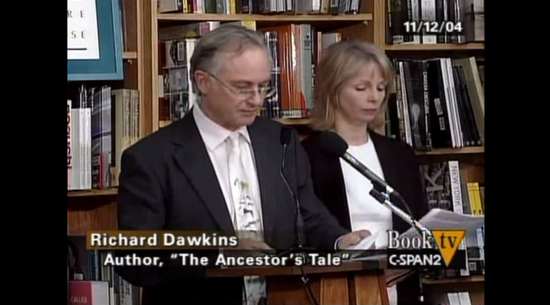
_
Francis and Edith Schaeffer seen below:

__

_
Dawkins, Hitchens, Dennett, Harris
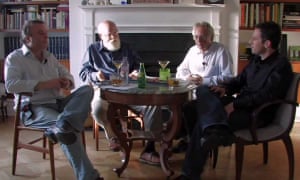
Canary Islands 2014: Harold Kroto and Richard Dawkins

__
Francis Schaeffer pictured below:

The Basis of Human Dignity by Francis Schaeffer

Richard Dawkins, founder of the Richard Dawkins Foundation for Reason and Science. Credit: Don Arnold Getty Images
—
Francis Schaeffer in 1984
Christian Manifesto by Francis Schaeffer
Francis Schaeffer in 1982
—-
Whatever Happened to the Human Race? Episode 1
—
—

–
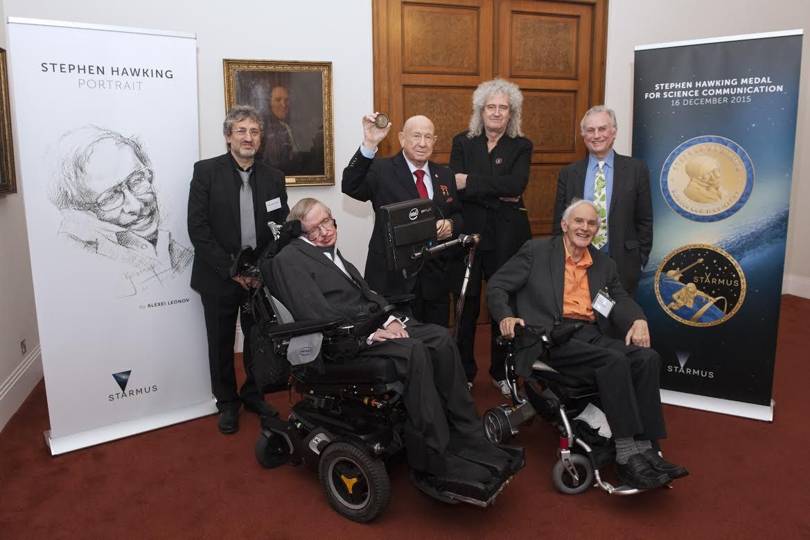
Garik Israelian, Stephen Hawking, Alexey Leonov, Brian May, Richard Dawkins and Harry Kroto
—-
—-
—-
Dark History of Evolution-Henry Morris, Ph.D.
—-
Featured artist is Mark Rothko
Rothko, Mark – by Nigel Halliday
Mark Rothko
Tate Modern, September 2008 – February 2009by Nigel Halliday It is difficult to see these monumental, brooding images without being conscious that they are the product of a large, brooding personality who at the end of the decade would take his own life. And perhaps we should not try to see them in any other way. Walking through this exhibition, you know you are in the presence of something very serious: a profound pondering of the meaning of being and the enticements of not-being. Rothko described his works as being amenable to both sacred and profane readings: they seem to meditate on the mystery of human existence, but offer no metaphysical way out. Monolithic forms hang in space. They are abstract shapes, so cannot be identified with specific objects in the physical world. And even their identity as forms is deliberately blurred by their rough edges, and they are often painted in a colour so close to the background that it is difficult to distinguish one from another. This is true of the red-on-maroon paintings of the late 1950s, and even more the wonderfully sombre black paintings of 1964. The story at the heart of this exhibition is Rothko’s commission in 1958 for a series of paintings to decorate the Four Seasons restaurant on the ground-floor of the Seagram Building, New York’s latest modernist icon designed by Mies van der Rohe and Philip Johnson. The following year, however, before the paintings had been installed, he and his wife visited the restaurant and were appalled by its gaudiness. Rothko promptly withdrew from the commission and repaid the advance. He had already created more than thirty paintings in the series, although the restaurant needed less than ten. These have never been exhibited together, although nine were given to the Tate shortly before the artist’s death and have hung together ever since in the Rothko Room. More have been added from across the world for this show, as well as examples of subsequent series of paintings that he produced. It is easy to mock Rothko’s work, as if it is simple in its simplicity. But as parts of this exhibition helpfully demonstrate, the works are carefully planned in miniature, and are then built up in layers of mixed media. When you look at them close up, you can how one layer will bleed out under another, how rough the brushstrokes sometimes are, how splashy the paint. Looking at the works in the subdued, but sadly reflective, lighting of the Tate, you can easily see how inappropriate they would be to a bustling New York restaurant, dedicated to the passing pleasures of the palate and social gossip. A room of Rothkos is quiet and meditative, partly because there is not much in them to talk about, but also because the images seem to direct you towards the silence of nothingness. The indistinctness of the separation between form and background seems to question the very idea of individuation: why do things exist separately from one another? As with Kandinsky and Mondrian, you don’t have to agree with the theory and worldview to recognise that here are beautiful but weighty meditations on life and meaning. But to me this exhibition highlighted the deep significance of the Christian doctrine of the Trinity. Rothko seems to seek the essence of reality, and the answer to the questions of being, in an undifferentiated oneness, or the nothingness of Nirvana. But the Christian gospel celebrates individuation. In the Trinity, we know that at the heart of reality is plurality: not one person divided into three, but three persons, eternally distinct. In the same way, creation is marked by a series of separations, light from dark, water from land, one species from another species, which God calls ‘good’. Without separation, there is no existence, or at least no self-consciousness. And according to the Creator, individuality and the multiplicity of created things is intrinsically good. But with the suffering of the world in rebellion against its Creator, we cannot but ache with pity for those who sense the enticements of not-being, grieve with Rothko as he pours out his wordless yearnings on these canvases, and feel the weight of the world in these beautiful, weighty abstract images. Published in Third Waywww.nigelhalliday.org/rothko-at-tate-modern-2009
—-
Related posts:
RESPONDING TO HARRY KROTO’S BRILLIANT RENOWNED ACADEMICS!! Part 48 Nobel Prize Winner and Global Warming Denier Ivar Giaever “I think religion is to blame for a lot of the ills in this world!”
On November 21, 2014 I received a letter from Nobel Laureate Harry Kroto and it said: …Please click on this URL http://vimeo.com/26991975 and you will hear what far smarter people than I have to say on this matter. I agree with them. Harry Kroto _________________ Below you have picture of 1996 Chemistry Nobel Prize Winner […]
FRANCIS SCHAEFFER ANALYZES ART AND CULTURE PART 78 THE BEATLES (Breaking down the song TOMORROW NEVER KNOWS) Featured musical artist is Stuart Gerber
The Beatles were “inspired by the musique concrète of German composer and early electronic music pioneer Karlheinz Stockhausen…” as SCOTT THILL has asserted. Francis Schaeffer noted that ideas of “Non-resolution” and “Fragmentation” came down German and French streams with the influence of Beethoven’s last Quartets and then the influence of Debussy and later Schoenberg’s non-resolution which is in total contrast […]
RESPONDING TO HARRY KROTO’S BRILLIANT RENOWNED ACADEMICS!! Part 42 Peter Singer, Professor of Bioethics at Princeton University, THE PROBLEM OF EVIL
_______ On November 21, 2014 I received a letter from Nobel Laureate Harry Kroto and it said: …Please click on this URL http://vimeo.com/26991975 and you will hear what far smarter people than I have to say on this matter. I agree with them. Harry Kroto _________________ Below you have picture of 1996 Chemistry Nobel Prize […]
RESPONDING TO HARRY KROTO’S BRILLIANT RENOWNED ACADEMICS!! Bart Ehrman “Why should one think that God performed the miracle of inspiring the words in the first place if He didn’t perform the miracle of preserving the words?”
On November 21, 2014 I received a letter from Nobel Laureate Harry Kroto and it said: …Please click on this URL http://vimeo.com/26991975 and you will hear what far smarter people than I have to say on this matter. I agree with them. Harry Kroto ____________________ Below you have picture of 1996 Chemistry Nobel Prize Winner Dr. […]


